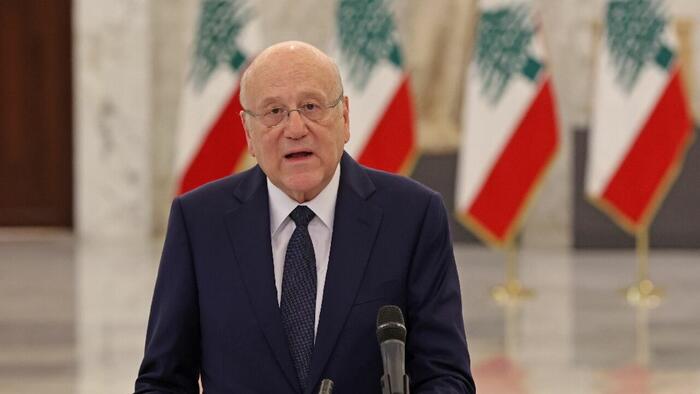Lebanon’s caretaker Prime Minister Najib Mikati recently expressed an unexpectedly optimistic outlook for peace in the region amidst ongoing tensions and hostilities, particularly between Israel and Hezbollah. During a broadcast on Al-Jadeed, Mikati highlighted a conversation he had with U.S. special envoy Amos Hochstein, which he described as “hopeful.” He indicated that efforts were being made to establish a ceasefire in the near future, asserting, “We are doing our best… to have a ceasefire within the coming hours or days.” Mikati conveyed a sense of cautious optimism about the possibility of a full ceasefire being realized before the U.S. elections on November 5. This sentiment aligns with suggestions from Israeli officials who claim that significant progress has been made toward a ceasefire.
In light of these developments, two senior White House advisers, Hochstein and Brett McGurk, arrived in Israel to expedite the finalization of the ceasefire deal. The U.S. officials hold the view that Hezbollah, weakened by losses—including the death of its long-standing leader Hassan Nasrallah—may be inclined to separate itself from Hamas and the ongoing conflict in Gaza. According to a report from Axios, both Israeli and U.S. officials believe that a resolution to the fighting between Israel and Hezbollah could be reached within a few weeks, indicating a growing momentum toward peace negotiations.
The U.S. involvement in this diplomatic effort signifies a concerted effort to stabilize the region. Notably, a potential deal’s timing appears to hinge on decisions from Israeli leaders regarding the ceasefire approach. The arrival of Hochstein and McGurk in Israel is interpreted as a sign of Prime Minister Netanyahu’s willingness to explore the proposed deal further. Additionally, CIA Director Bill Burns is scheduled to visit Cairo to discuss various bilateral matters, including the complex issue of hostage releases, while CENTCOM Commander Gen. Erik Kurilla is expected to meet with regional counterparts to discuss defense strategies and the situation in Israel.
As details of the U.S. ceasefire proposal have emerged, reports from Israeli media suggest that the plan features a structured 60-day implementation period. During this time, the Lebanese Armed Forces (LAF) would be tasked with deploying along the border and collecting arms possessed by Hezbollah in southern Lebanon. Following the cessation of hostilities, the Israeli Defense Forces (IDF) would need to withdraw their troops from Lebanon within a week, transitioning their responsibilities to the LAF, with support from UN peacekeeping forces and the involvement of approximately 10,000 Lebanese national troops.
Despite the positive discussions surrounding a potential ceasefire, violence continues to escalate on the ground. Israeli airstrikes have been reported in various locations, including Tyre and the Bekaa Valley, targeting Hezbollah positions. Concurrently, Hezbollah’s rocket attacks have resulted in civilian casualties in northern Israel, with reports of at least six civilians killed, as well as fatalities among foreign workers in the city of Metula and an Israeli woman in Haifa Bay. This cycle of violence underscores the precarious nature of the situation and the challenges that remain for achieving a sustainable ceasefire amidst the ongoing conflict.
In summary, while the diplomatic efforts led by both the U.S. and regional leaders signal a potential pathway to peace between Israel and Hezbollah, the situation remains volatile. The optimism expressed by PM Mikati is tempered by the reality of ongoing military actions and the intricate dynamics at play, including the need for a cohesive strategy that addresses the root causes of the conflict. As various stakeholders engage in negotiations and discussions, the international community watches closely, hoping for a peaceful resolution that could help stabilize Lebanon and surrounding regions.

